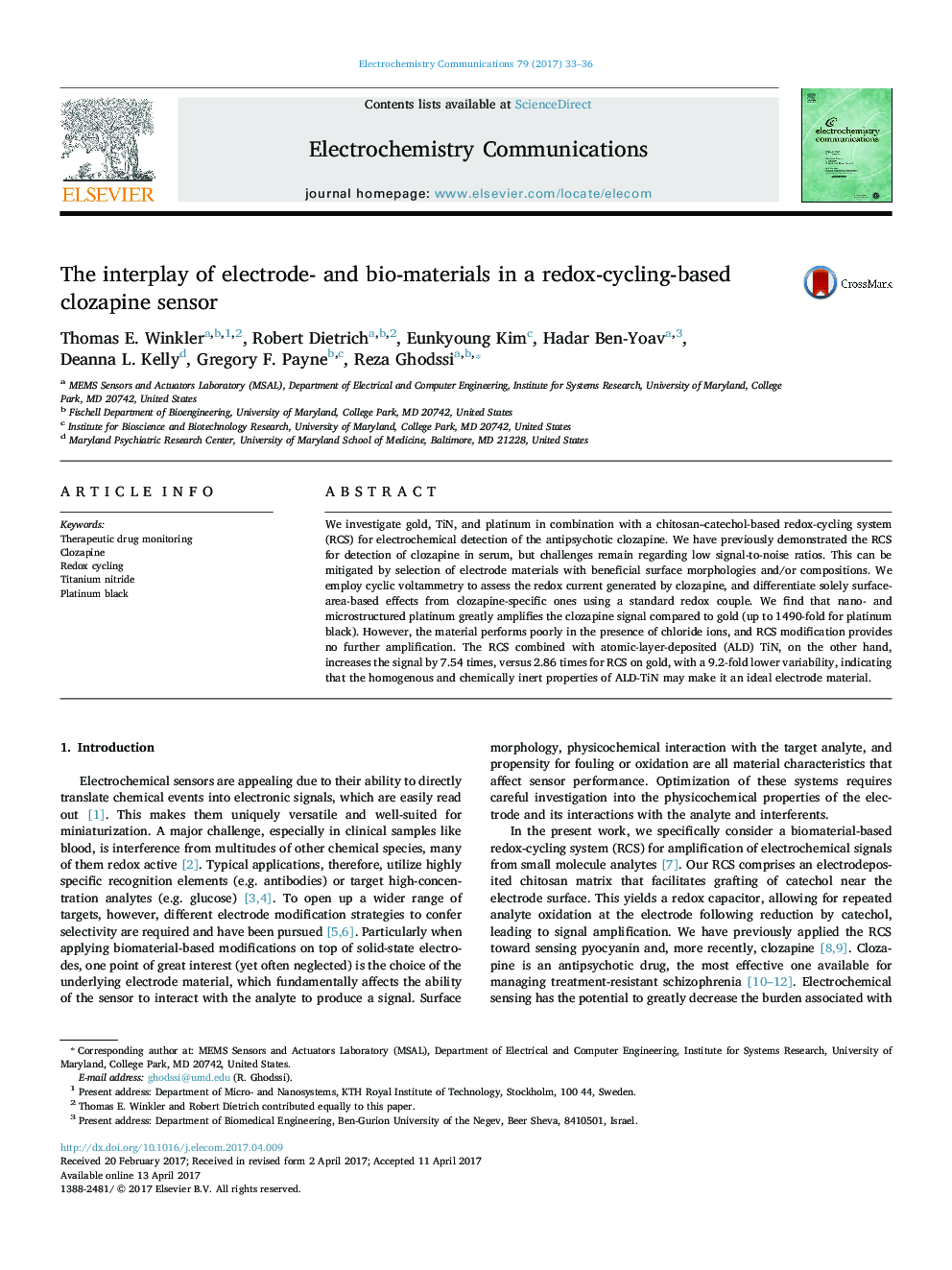| Article ID | Journal | Published Year | Pages | File Type |
|---|---|---|---|---|
| 4766572 | Electrochemistry Communications | 2017 | 4 Pages |
Abstract
We investigate gold, TiN, and platinum in combination with a chitosan-catechol-based redox-cycling system (RCS) for electrochemical detection of the antipsychotic clozapine. We have previously demonstrated the RCS for detection of clozapine in serum, but challenges remain regarding low signal-to-noise ratios. This can be mitigated by selection of electrode materials with beneficial surface morphologies and/or compositions. We employ cyclic voltammetry to assess the redox current generated by clozapine, and differentiate solely surface-area-based effects from clozapine-specific ones using a standard redox couple. We find that nano- and microstructured platinum greatly amplifies the clozapine signal compared to gold (up to 1490-fold for platinum black). However, the material performs poorly in the presence of chloride ions, and RCS modification provides no further amplification. The RCS combined with atomic-layer-deposited (ALD) TiN, on the other hand, increases the signal by 7.54 times, versus 2.86 times for RCS on gold, with a 9.2-fold lower variability, indicating that the homogenous and chemically inert properties of ALD-TiN may make it an ideal electrode material.
Related Topics
Physical Sciences and Engineering
Chemical Engineering
Chemical Engineering (General)
Authors
Thomas E. Winkler, Robert Dietrich, Eunkyoung Kim, Hadar Ben-Yoav, Deanna L. Kelly, Gregory F. Payne, Reza Ghodssi,
